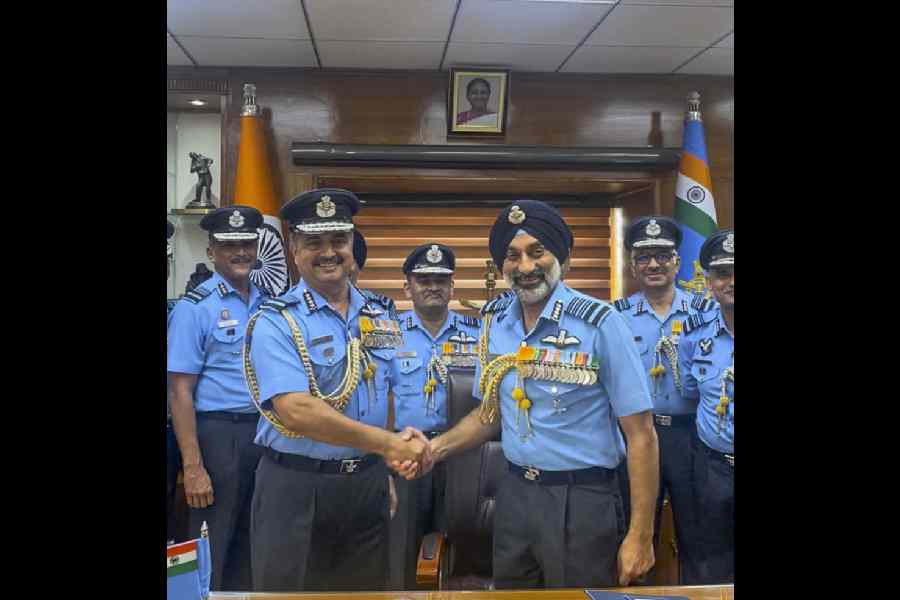Air Chief Marshal Amar Preet Singh on Monday took charge as the chief of the Indian Air Force (IAF), succeeding incumbent Air Chief Marshal V.R. Chaudhari.
Before assuming the charge, Singh was the vice-chief of the Air Staff.
In July, Air Chief Marshal Singh had said “atmanirbharta (self-reliance) cannot be at the cost of the nation’s defence”, speaking out at a time the Centre is pushing its Make in India policy in the defence sector.
He had underscored the fact that he fully supported the drive towards self-reliance in defence, but flagged the deficiencies in domestic defence manufacturing and said “Atma Nirbhar Bharat should not just be a buzzword”.
Born on October 27, 1964, Singh was commissioned into the fighter pilot stream of the IAF in 1984. During a service spanning nearly 40 years, he has served in several command, staff, instructional and foreign appointments.
An alumnus of the National Defence Academy, Defence Services Staff College and National Defence College, Singh is a qualified flying instructor and an experimental test pilot with more than 5,000 hours of flying experience on several fixed and rotary-wing aircraft.
He has also commanded an operational fighter squadron and a frontline air base.
Sources in the IAF said Singh’s top priority would be strengthening the IAF’s fighting capability.
The IAF faces a shortageof fighter aircraft amid a delay in the delivery of the indigenous Tejas light combat aircraft, being made byHindustan AeronauticsLimited (HAL).
Around 65 to 70 per cent of the IAF’s fighter aircraft are Russian, and most of them either need urgent upgrades or are on the verge of retirement. Having foreign aircraft also means staying dependent on other countries for parts and components.
Against an authorised strength of 42 fighter squadrons, the IAF currently has 31. Each squadron has an average of 18 aircraft, which means the IAF has 558 fighters, 198 short of the required 756.
Recently, the IAF had flagged its concern over the slow pace of the Tejas light combat aircraft programme by the Hindustan Aeronautics Limited, saying a delayed induction could affect the force’s combat effectiveness.










